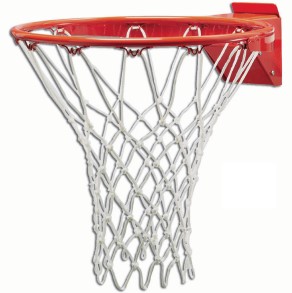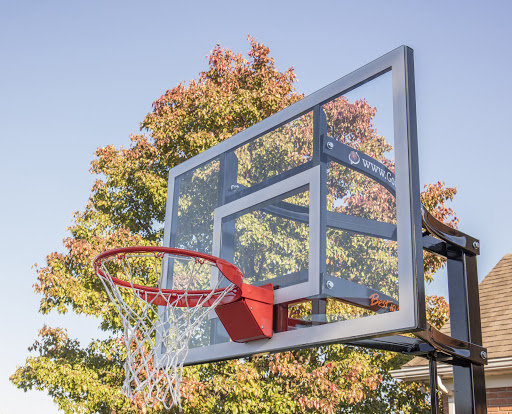If space is a limiting factor, a Wall-Mount unit may be your best option!
As with In-Ground systems, there are still many factors to consider when purchasing a Wall-Mount unit.
Those primary factors include:
1. Size
2. Rim / Backboard options
3. Price.
1. Size
Backboard Size
Primarily 3 sizes are available They range from 54" x 36" to 60" x 38" up to out largest model, the 72" x 42".
The smaller-sized backboards save on space and are typically used in a smaller playing area. The most popular 60" backboard saves space but still offers enough room for bank shots.
The 72" is a must for anyone training for competitive play or for you that want the best of the best in Wall-Mount units!
2. Rim / Backboard options
Rim
The standard size rim on a basketball hoop is 18" in diameter. There are 2 basic types of rims - adjustable and static. An adjustable rim is best for a diverse player lineup. If your lineup includes kids and adults, you'll want to change the rim height to accommodate players of different sizes and skill levels.
The range of height makes basketball an enjoyable workout for every member of your family. Lower the hoop so kids can learn how to dunk, shoot and hang on the rim if so desired. Raise it back up so adults can perfect their shooting and dunking as well.

Some hoops require a pole to adjust the rim height. While other hoops have an easy-to-use crank. If children are in your lineup, make sure they'll be able to reach the crank to make adjustments as needed.
Static, or fixed height rims are much less desirable and most hoops today are equipped with a breakaway, spring-loaded rim. A necessary feature if you want to add the thrill of hanging and dunking like Michael Jordan to your game.
When pressure gets exerted onto a breakaway rim, the spring alleviates tension by letting the rim slide downwards. After the player releases the rim, it springs back into the horizontal position.
Be aware that some lower-priced hoops leave the spring exposed. Most higher-priced options enclose the spring to protect it from the weather or potential finger pinching.
Backboard

The backboard controls the performance of your hoop because it influences how your ball bounces, rebounds and spins off the backboard.
Low-quality backboards will have dead spots causing your ball to drop flat instead of rebounding with spring.
An unstable backboard will add vibration. That shakiness makes it harder to sink shots and predict how your ball will react when the ball makes contact with the board.
Backboards are made with either tempered glass or acrylic:
Tempered Glass is the material used at the professional level, balls will have the same bounce, spin and performance you'll find in high school, college and NBA courts. It's the recommended material for people who want to improve their skills or play competitively.
Acrylic is a cheaper glass-look-alike. These backboards will not give you the high-caliber ball performance found in the gym. They tend to be lightweight, so they don't need as much support.
3. Price
As with most everything, you get what you pay for. Basketball hoops are no exception. This is a pretty straightforward decision. Larger backboards are more expensive. Larger, thicker diameter steel poles are more expensive than smaller, thinner. Again, pretty straight forward.
In the end, the decision on the criteria that are most important to you will ultimately dictate the cost to procure.


 Facebook (145k Followers)
Facebook (145k Followers) YouTube (152k Subscribers)
YouTube (152k Subscribers) Twitter (33k Followers)
Twitter (33k Followers) Q&A Forum
Q&A Forum Podcasts
Podcasts